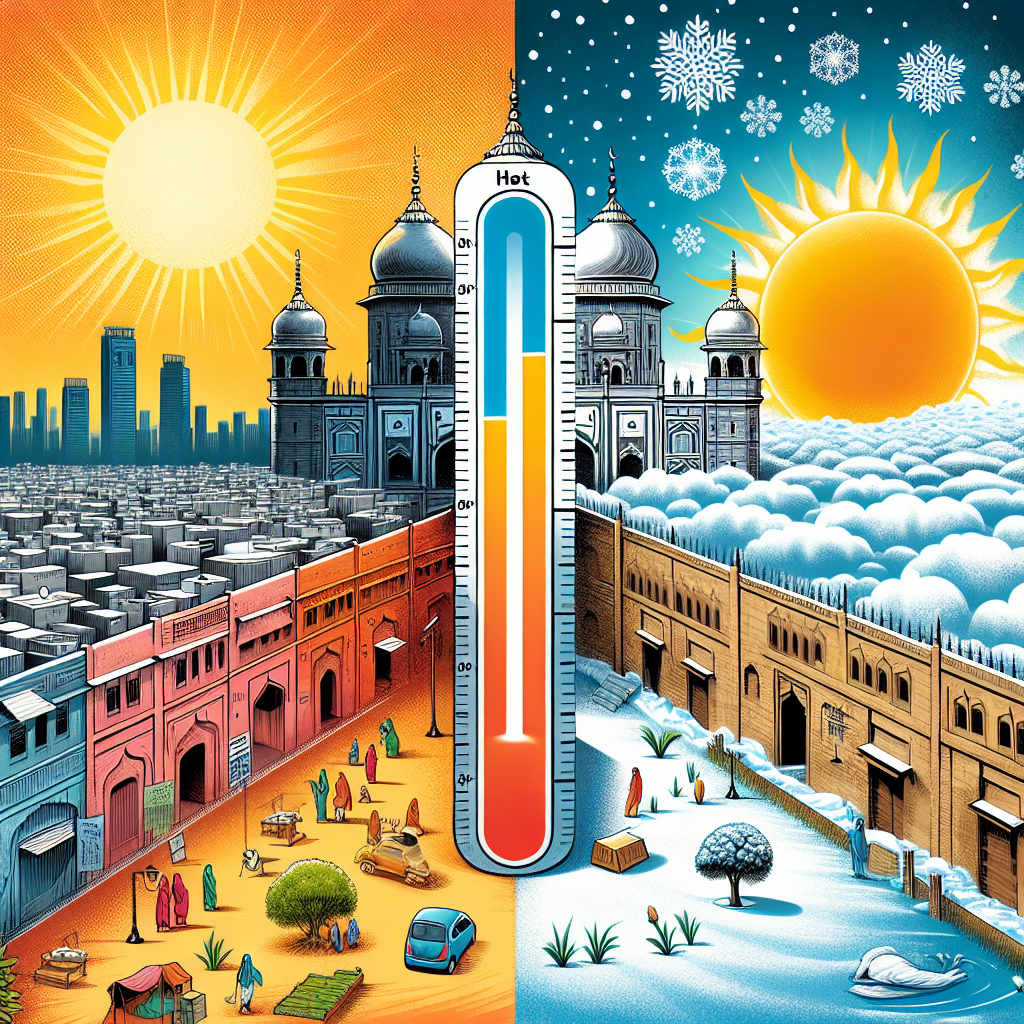[ad_1]
Prayagraj Experiences Temperature Variation: A Look at Climate Changes
Prayagraj, a historically rich city in northern India, is known for its confluence of the Ganges, Yamuna, and Sarasvati rivers. The city not only stands as a cultural hub but also serves as a living testament to changing climate patterns in recent decades. With the increasing frequency of extreme weather events and significant temperature variations, Prayagraj’s climate narrative offers insights into broader global climate change trends.
A Historical Climate Overview
Prayagraj’s climate has always been marked by a distinct tropical wet and dry pattern, with three primary seasons: summer, monsoon, and winter. Traditionally, the summer months (March to June) brought soaring temperatures, often exceeding 40 degrees Celsius, while winters (December to February) offered a refreshing respite with cooler temperatures, occasionally dipping to around 5 degrees Celsius.
However, local weather patterns in Prayagraj have been experiencing noticeable shifts. Residents have observed that the summers are becoming increasingly oppressive, with unrelenting heat waves becoming the norm. In contrast, the winters have also seen fluctuations, leading to an erratic climate experience characterized by warmer than average winter days and sudden cold snaps.
The Causes of Temperature Variation
The fluctuations in temperature can be attributed to multiple factors, both local and global.
-
Urbanization and Land Use Change: Rapid urban development and the expansion of infrastructure in Prayagraj have contributed significantly to the heat island effect. As green cover diminishes and concrete structures proliferate, surface temperatures increase. This urban heat island effect exacerbates the already high temperatures during summer months.
-
Deforestation: The reduction of forested areas for agricultural expansion and urban development has contributed to changes in local microclimates. Trees play a crucial role in regulating temperatures and providing shade. Their loss has increased exposure to direct sunlight and elevated ground temperatures.
- Global Climate Change: The broader climate crisis, driven by greenhouse gas emissions and environmental degradation, has led to erratic weather patterns globally. The Intergovernmental Panel on Climate Change (IPCC) reports indicate that global warming is impacting rainfall patterns and temperature norms, leading to increased instances of droughts and floods in various regions, including parts of India.
Observations from Recent Years
Recent meteorological data shows that Prayagraj has experienced notable temperature spikes, particularly during the summer months. In 2023, residents faced several heatwaves, with recorded temperatures surpassing 45 degrees Celsius, making it one of the hottest summers in the city’s history. Conversely, the winter of 2022 saw unusually high temperatures, with January 2023 recording averages that were approximately 3-4 degrees Celsius above the usual norms.
Additionally, rainfall patterns during the monsoon season have become unpredictable. Some years witness intense and prolonged showers causing flooding, while others face drought-like conditions. These erratic patterns can have serious consequences for agriculture, water supply, and public health.
Societal Implications
The implications of climate change and temperature variation are multifaceted. For agriculture—one of Prayagraj’s economic backbones—altered rainfall patterns and increased evaporation rates are stressing crop production. Farmers are increasingly facing challenges with irrigation and managing crop selection as traditional methods become less resilient to new climate realities.
Public health is another critical area affected by rising temperatures. Increased heat can lead to a surge in heat-related illnesses, while poor air quality can exacerbate respiratory issues. Vulnerable populations, including the elderly and those with pre-existing health conditions, are particularly at risk.
Conclusion
Prayagraj’s experiences with temperature variation embody the broader narrative of climate change impacting urban centers across the globe. As the city continues navigating these climatic shifts, the importance of sustainable policies and environmental stewardship cannot be overstated. Local governments and communities must adopt adaptive strategies to mitigate these changes, emphasizing the creation of green spaces, the preservation of water resources, and a commitment to sustainable urban development.
In order to safeguard the future of Prayagraj and its inhabitants, a collective response is critical—a response that not only acknowledges the realities of climate change but actively works towards a more resilient and sustainable environment. The time for action is now, as both local and global challenges converge at this confluence of rivers, history, and humanity.
[ad_2]

